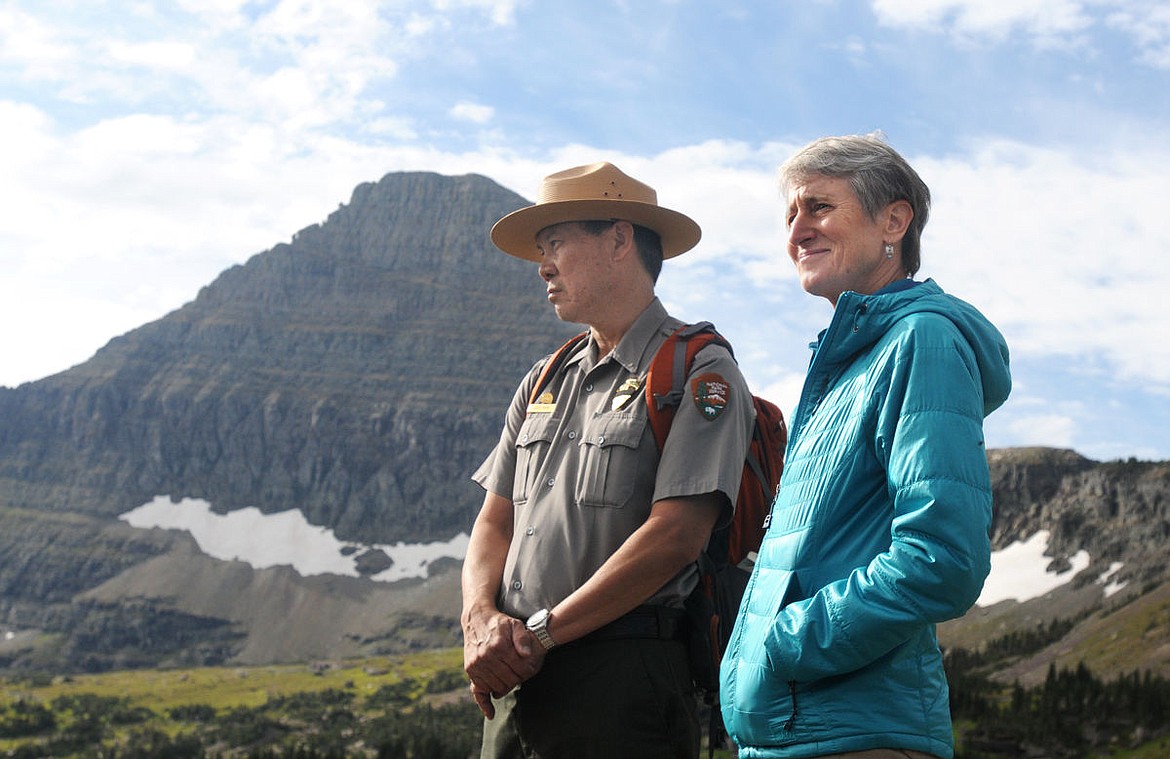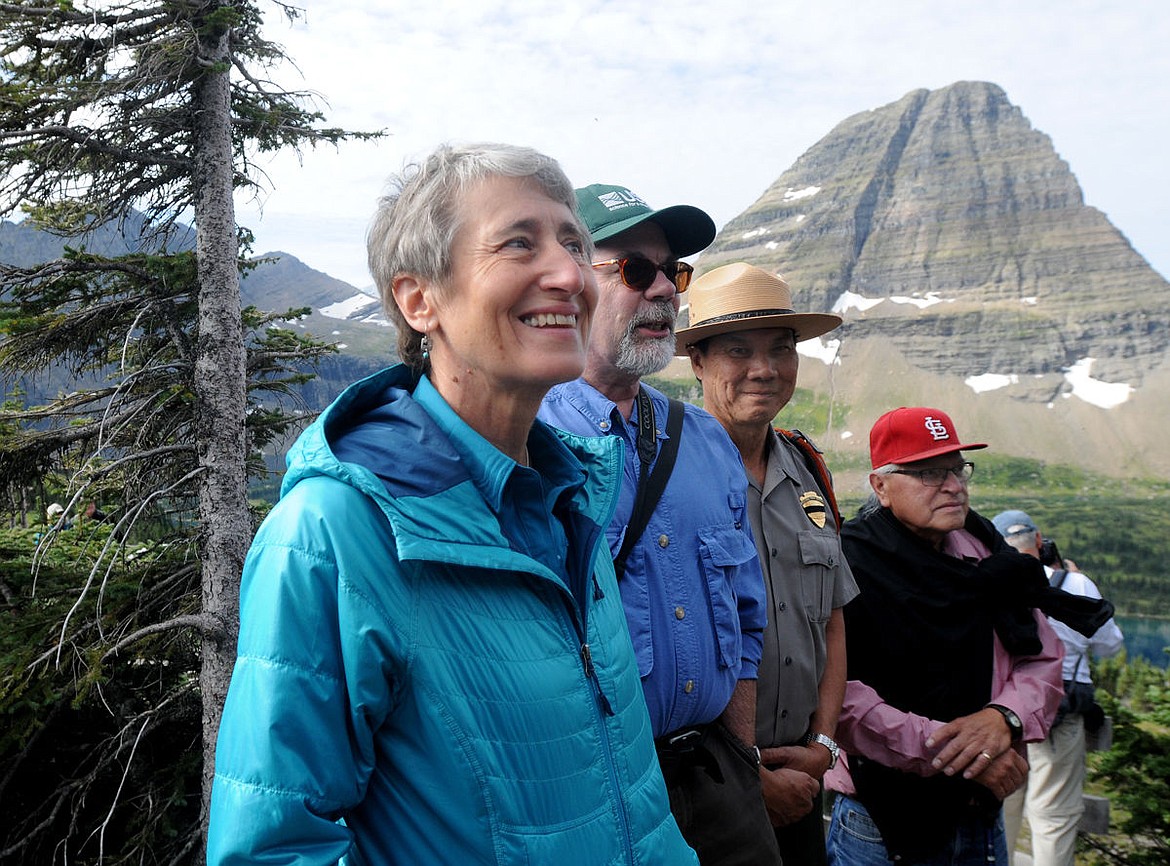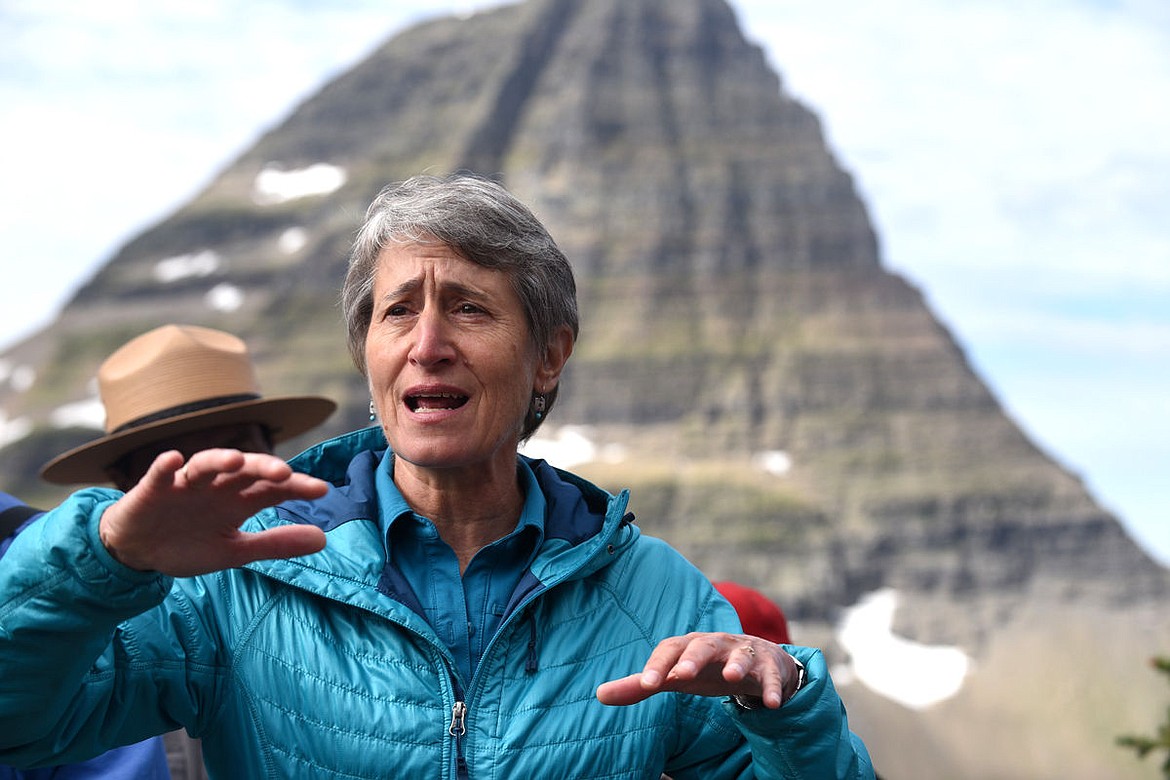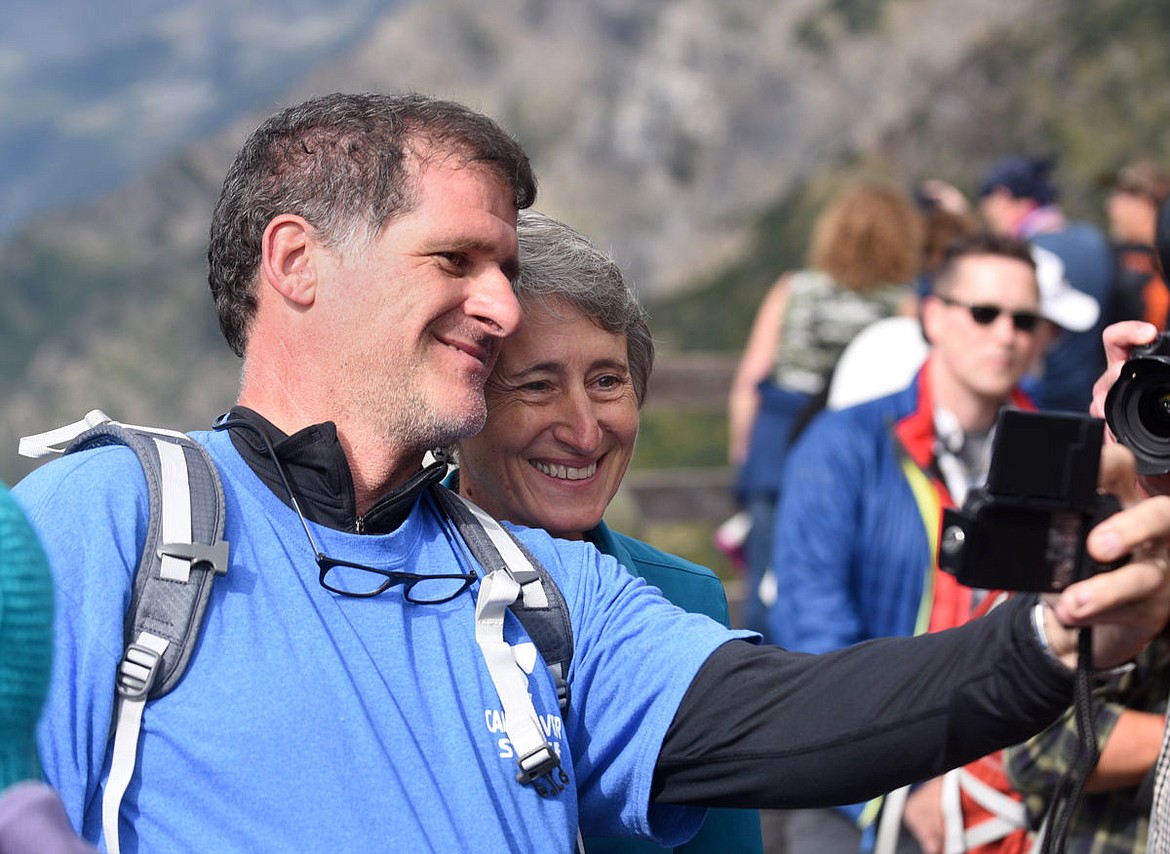Glacier Park, climate change in spotlight
Celebrating the National Park Service’s 100th birthday Thursday, U.S. Secretary of the Interior Sally Jewell led a procession of government officials, conservationists and local media through Glacier National Park, focusing her comments on the impacts of climate change in one of the county’s most visible bellwethers for the issue.
“This provides not only a great opportunity for scientific research, but a great opportunity to tell a story that captivates the nation and the world,” Jewell told the group, using as a backdrop the ice-carved cliffs surrounding Hidden Lake Overlook above Logan Pass.
“It’s places like Glacier that help tell that story in a way that people can relate to, because so many people have visited here and so many people have seen these magnificent glaciers.”
The morning tour came before the secretary’s visit to Yellowstone National Park Thursday evening and included remarks from park employees dealing firsthand with the effects of a changing climate.
Dan Fagre, a Glacier-based research ecologist with the U.S. Geological Survey, shared some of his research findings that have shown how shorter winters, hotter summers and declining snowpack are impacting the park’s interconnected ecosystems.
On average, any given location in the park sees 26 fewer days of annual snowcover since climate changes began taking effect, Fagre said, and the treeline along alpine slopes is between 5 and 6 percent higher. Expanding forest cover and a hotter, drier climate in turn create more fuel for wildfires and permanently alter landscapes.
“Trees can last a long time in unfavorable conditions, but if you have a big reset, you may not get those species back,” he said.
Referring to the dense grove of Western red cedars at Avalanche, he added, “A lot of those trees are 500 years ago, that was during the Little Ice Age. ... An adult tree can handle a lot, but the seedlings can’t.”
And while the park is most known for the effects of the massive glaciers that carved its dramatic valleys, cliffs and spires during previous ice ages, Fagre said those bodies of ice have become so small that the main impacts will likely be felt from the dearth of high-elevation snow.
“When the snow is melting earlier, you just get greater stress on plants and animals” during the summer, he said. “If you expand that critical stress season, that’s when you start seeing those changes and stress on other species.”
Glacier has already begun to implement new resource policies to allow its flora and fauna to better weather the changes taking place.
During a stop along Going-to-the-Sun Road, Glacier Superintendent Jeff Mow noted how earlier this year, the park unveiled a proposal for a new parkwide fisheries management plan. Still in the public comment stage, it includes a framework for repopulating some of its alpine lakes with native species while reducing threats to their survival.
“By providing a refuge, what we’re trying to do is build that resiliency to climate change,” he said, adding that the park has for years been working to reduce the populations of invasive trout species that threaten native bull and westslope cutthroat trout.
Jewell also noted the other impacts facing Glacier and the country’s other national parks as the National Park Service heads into its next 100 years.
While she didn’t specify a timeline for cancellation of the oil and gas leases in the Badger-Two Medicine area near Glacier, Jewell said she had taken time a day earlier to visit the area with Blackfeet Tribal Chairman Harry Barnes, who has led a campaign to protect a landscape considered sacred by his tribe.
“There are places in this country that are too special to develop,” Jewell said. “We’re working closely with the tribes and we’re working with the company that’s involved in these leases to try to come to a resolution … But, it’s a legal process that takes time.”
She referred to the agency’s work with the Blackfeet, other tribes and nonprofit organizations such as the National Park Service Conservancy as critical partnerships in the National Park Service’s evolving mission.
“National parks cannot survive as islands or postage stamps in the broader landscape, and there is no place farther along in the United States of America than the Crown of the Continent region for making the case for that,” she said. “Glacier cannot survive and take care of the plants and the animals and the ecosystems alone. We need a partnership.”
Using as an example the boardwalk trail that guides visitors across the fragile alpine meadows between Logan Pass and Hidden Lake Overlook, she commended the park’s work to balance the federal agency’s mandate for protecting the country’s most treasured landscapes while providing the public with the opportunity to explore them.
“This is a little bit of a snapshot that tells a story of this incredible idea that our leaders had in this country 100 years ago that brought us the National Park Service, that really is the envy of the world.”
Reporter Sam Wilson may be reached at 758-4407 or by email at swilson@dailyinterlake.com.












